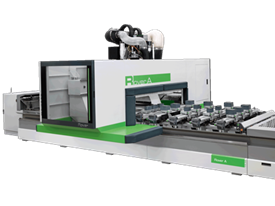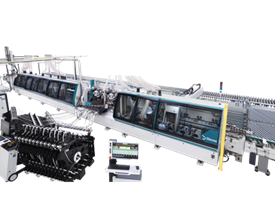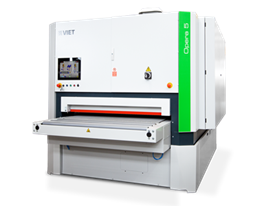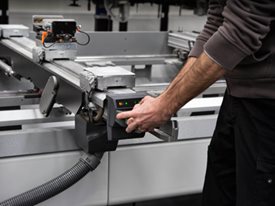For many businesses that need to handle and store bulk materials, various types of material handling equipment and systems are essential.
For many businesses that need to handle and store bulk materials, various types of material handling equipment and systems are essential. Equipment meant to move, regulate, protect, or store material via various processes at warehouses and facilities is generally referred to as material handling equipment. This equipment is incredibly adaptable and is utilized in a wide range of industries. By being more knowledgeable about material handling machinery, and the different types of material handling equipment you'll be able to properly outfit your facility with the systems and machinery that your business requires.
Find out more about the many types of material handling equipment and the sectors in which they might be employed. You might also be curious to learn more about how to choose the best equipment for your needs and the main use cases of using material handling equipment.
Types of Materials Handling Equipments
Bulk material handling equipment, engineered systems, storage, and handling equipment, and industrial trucks are the four primary categories under which material handling equipment is typically categorized.
1. Bulk Material Handling Equipments
Equipment for transporting, storing, and controlling bulk materials falls under the category of bulk handling material handling equipment. Equipment for handling bulk materials is typically made by manufacturers to transport and store commodities in loose condition. These devices are used to handle food, liquid, metal, and mineral materials.
Consider some of the primary categories of bulk material equipment below if you want a firm understanding of what it is:
- Hoppers are sizable funnel-shaped objects with shut-off apertures. Businesses use hoppers to fill containers with loose contents.
- Reclaimers are sizable equipment made to collect loose materials from a company's stockpile.
- Belt conveyors: Belt conveyors are a crucial component of a conveyor system. They rotate their belts and transport large amounts of stuff from one place to another using drums or pulleys.
- Stackers: Stackers are essential for handling bulk materials. These automated devices can independently transport loose materials to stockpiles.
Elevators that convey bulk goods vertically include bucket elevators, often known as grain legs. These materials will be moved along a production pathway and occasionally stored.
2. Engineered Systems
Engineered systems, also referred to as automated systems, are pieces of bulk material handling machinery designed to assist in material storage and transportation. Automated systems often include several pieces of machinery. Since they eliminate the need for manual labor to carry out various duties, they are very well-liked. The following are some of the most common types of engineered systems:
- Automated Storage and Retrieval Systems (AS/RS): Because it can handle a lot of work, an AS/RS is a highly common type of engineering system. It uses a shuttle to collect loose materials, which are then placed on necessary system components. The picking procedure can be either manually or automatically carried out. For simple processing, these systems also include racks, shelves, and aisles. They can also be linked to a business network, which enables managers to easily keep an eye on their inventories.
- Automated guided vehicles (AGVs): Computer-driven trucks with sensors and detectors are known as AGVs. These cars may be fully autonomous, transporting materials throughout your facility securely along predetermined paths.
- Robotic delivery systems: To move materials, several institutions use automated robotic delivery systems. These systems are frequently used by businesses to move goods down an assembly line.
- Conveyor systems: Conveyor systems include several mechanical components and gadgets that automatically move goods around a facility. There are many different types of these conveyor systems, including apron, cleated, chain, overhead, and vehicle conveyor systems.
3. Industrial Trucks
Industrial trucks include a diverse range of machinery and are all created to aid in the transportation of materials. These industrial trucks can be anything from tiny, manually driven devices to big, drivable devices. Industrial trucks can generally be divided into two groups: non-stacking trucks and stacking trucks. Stacking trucks can also load materials and stack them, whereas non-stacking trucks are just for transportation.
The following are some of the most common industrial vehicle types:
- Hand trucks: Also known as dollies, hand trucks are compact pieces of machinery used to provide users with the leverage they need to move large objects.
- Side loaders: Producers design side loaders to conveniently pick up things on either side of narrow aisles while fitting between them.
- Pallet trucks—also referred to as forklifts—are tools that operators can use to lift bulky pallets. They have forks that fit underneath the pallet, raise it, and then secure it when the operator moves it to a different spot. Forklifts, both manual and electrical, are used in many different warehouses across the nation.
Order pickers are used by operators to obtain products that are housed on high shelves. Operators can reach objects that are out of reach thanks to these machines' safe lifting capabilities.
4. Equipment For Storage And Handling
To safely keep and organize goods while they wait for another step in the production or distribution process, storage and warehouse handling equipment are necessary. These storage devices may be used by a corporation to keep materials for short or lengthy periods, depending on their demands. Storage and handling equipment is typically fixed and not automated, but businesses frequently utilize it in conjunction with automated systems and equipment.
Some of the most typical pieces of storage and handling gear are listed below:
- Shelves, drawers, and bins can all be utilized to store and arrange common items. When a business wants to arrange smaller goods that could be lost otherwise, bins and drawers are more common.
- Mezzanines: An indoor raised platform that creates an additional storage room above the ground is referred to as a mezzanine. Companies can store goods vertically on these mezzanines, freeing up room on the warehouse floor. They are available in modular, mobile, free-standing, rack-supported, building-supported, and modular configurations.
- Racks: Companies can store their items more conveniently and save floor space by using racks. Sliding racks, drive-in or drive-through racks, pallet tracks, and push-back racks are a few examples of racks with different functions.
Manufacturers create stacking frames so that they may be quickly stacked on top of one another. They are one of the most common types of storage equipment used in material handling since they safely store pallets of delicate equipment while also freeing up space.
You could be interested in purchasing equipment for your facilities now that you are more knowledgeable on how to choose the best type of material handling equipment and how it operates. Check out our inventory of material handling equipment right now.



.png)





 Worldwide
Worldwide
 Italia
Italia
 United Kingdom
United Kingdom
 Россия
Россия
 France
France
 中国
中国
 Asia
Asia
 Deutschland
Deutschland
 España
España
 Schweiz
Schweiz
 North America
North America
 India
India
 Australia & New Zealand
Australia & New Zealand
 Türkiye Cumhuriyeti
Türkiye Cumhuriyeti
 Middle East
Middle East
 Brasil
Brasil